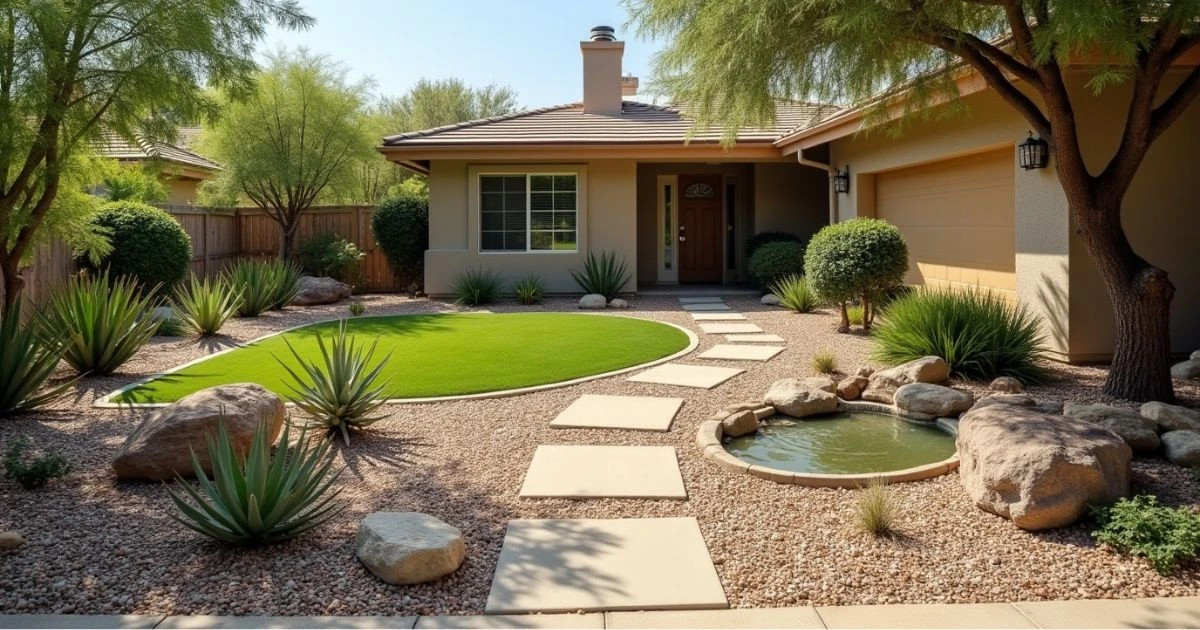A xeriscape front yard can completely transform the way you approach landscaping. Whether you’re looking to save water, reduce maintenance, or create a more sustainable environment, xeriscaping offers the perfect solution. It’s a landscaping method that prioritizes water efficiency while maintaining a stunning, low-maintenance outdoor space. In areas with dry climates like Colorado, xeriscaping is becoming a go-to choice for homeowners who want to create beautiful, functional yards with minimal water use.
This article takes you through 7 stunning xeriscape designs for your front yard. From desert-inspired minimalism to lush pollinator-friendly landscapes, each design offers creative ways to cut back on water usage while elevating the aesthetic appeal of your home.
Table of Contents
What is Xeriscaping? A Quick Overview
Xeriscaping is the practice of landscaping in a way that conserves water, reduces maintenance, and incorporates plants that thrive in dry conditions. Originating in arid climates, it doesn’t mean a barren, dull yard but rather a smart, sustainable, and aesthetically pleasing alternative to traditional grass lawns.
Core Principles of Xeriscaping
- Water Efficiency: Xeriscaping helps reduce water usage by up to 50% compared to traditional lawns, which is crucial in water-scarce areas.
- Native Plants: Choosing drought-tolerant plants native to your region helps conserve water, as these plants are adapted to the local climate.
- Efficient Irrigation: Drip irrigation and smart watering systems ensure water is delivered exactly where it’s needed.
- Mulching: Aids in retaining soil moisture and minimizing evaporation.
- Soil Improvement: Using compost and other soil amendments to improve the soil’s ability to retain moisture.
Xeriscaping is an eco-friendly option that provides long-term benefits, including water conservation, lower maintenance, and support for local wildlife.
Why Choose a Xeriscape Front Yard?
When considering whether xeriscaping is the right option for your front yard, here are a few reasons why it’s a smart decision.
1. Save Water and Money
In drought-prone regions like Colorado, water conservation is crucial. A xeriscape front yard drastically reduces the amount of water needed to maintain your landscaping. This results in lower water bills and a significant reduction in your environmental footprint. Plus, many states and municipalities offer rebates or incentives to homeowners who choose to xeriscape, making it an even more cost-effective option.
2. Low Maintenance
Traditional lawns require regular mowing, fertilizing, and watering, which can take up valuable time. Xeriscaping, on the other hand, features drought-tolerant plants that need minimal attention. With a focus on hardy, native species, you can say goodbye to constant lawn care and hello to a stress-free outdoor space.
3. Eco-Friendly Impact
Traditional lawns often require chemicals, fertilizers, and excessive water. Xeriscaping, by contrast, helps to reduce water consumption, prevent soil erosion, and supports biodiversity. Additionally, many xeriscape plants attract pollinators like bees and butterflies, contributing to a healthier ecosystem.
4. Year-Round Beauty
Xeriscaping offers an array of plant choices that remain vibrant year-round. Unlike grass, which goes dormant in the winter and can look brown and patchy in the summer, xeriscaped yards are filled with resilient plants that can thrive in all seasons, creating constant visual interest.
7 Stunning Xeriscape Front Yard Designs
Here are seven eye-catching xeriscape front yard designs to inspire your own landscaping transformation. These designs can be customized to fit your climate and personal style while promoting water efficiency.
1. Desert-Inspired Minimalism
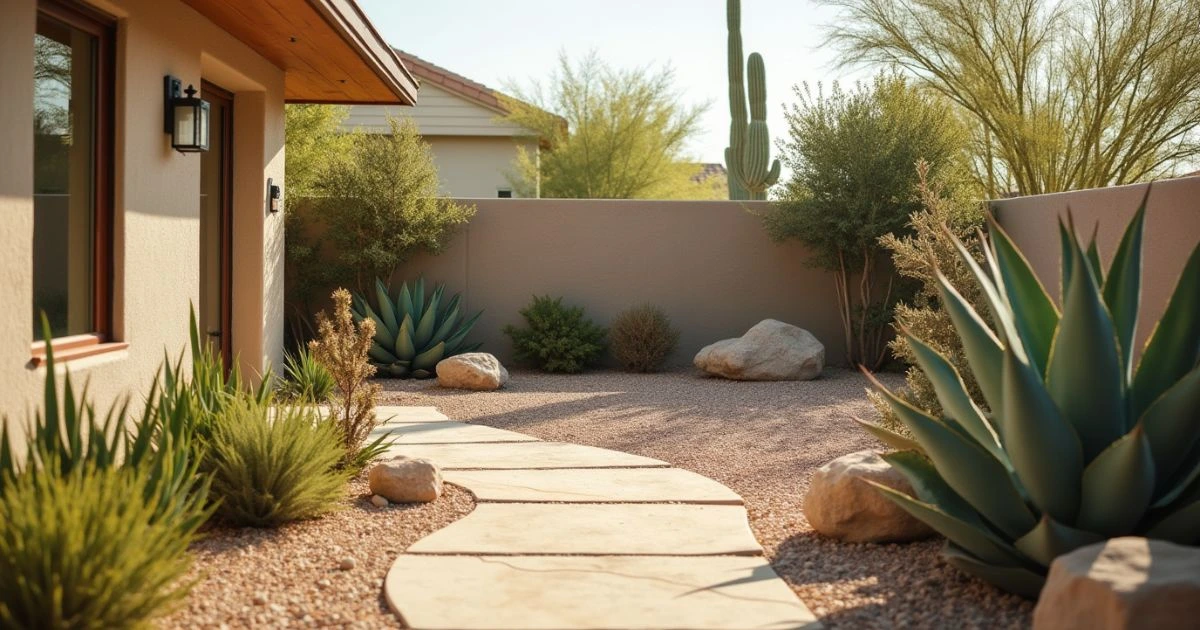
A desert-inspired xeriscape features simple, bold elements such as rocks, succulents, and drought-tolerant grasses. Use materials like decomposed granite, river rocks, and boulders to create clean, minimalist lines that evoke the peacefulness of a desert landscape. Yucca, agave, and barrel cactus can be used to add visual interest and texture. This type of design works well in hot, dry climates.
2. Rock Garden Retreat
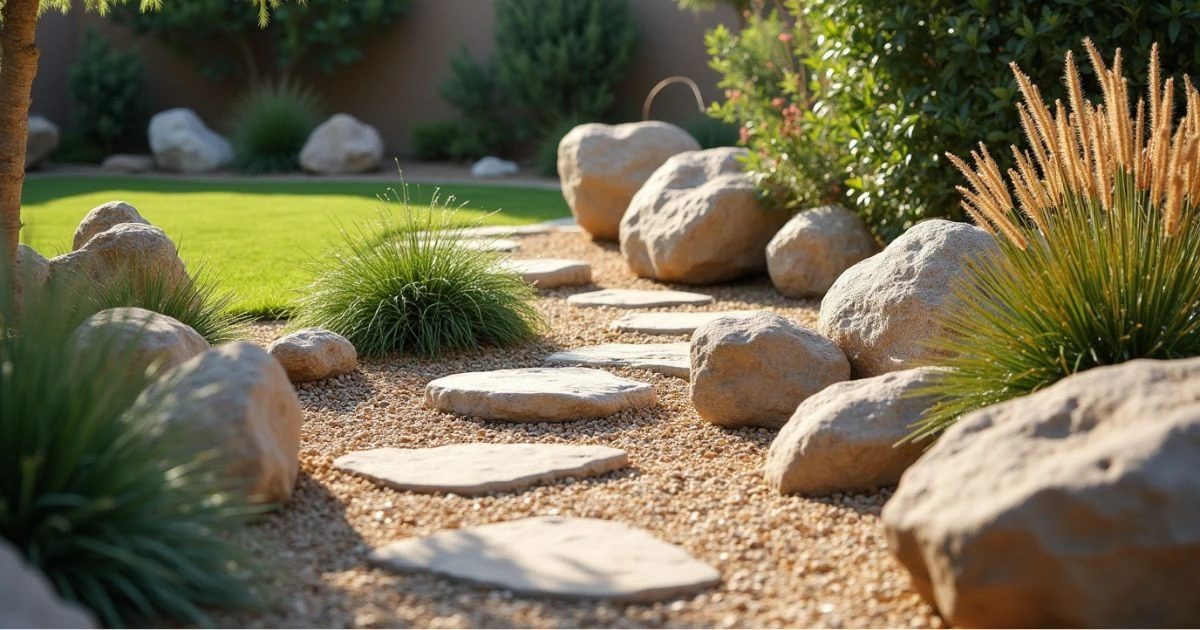
Rocks and stones are a central feature of this xeriscape design. Create a low-maintenance rock garden with a variety of drought-resistant ground covers like creeping thyme or sedum. Add large boulders to create focal points and pathways, and intersperse them with plants like lavender and black-eyed Susan for a pop of color. This design is perfect for smaller front yards or anyone looking for a natural, rustic aesthetic.
3. Mediterranean Haven
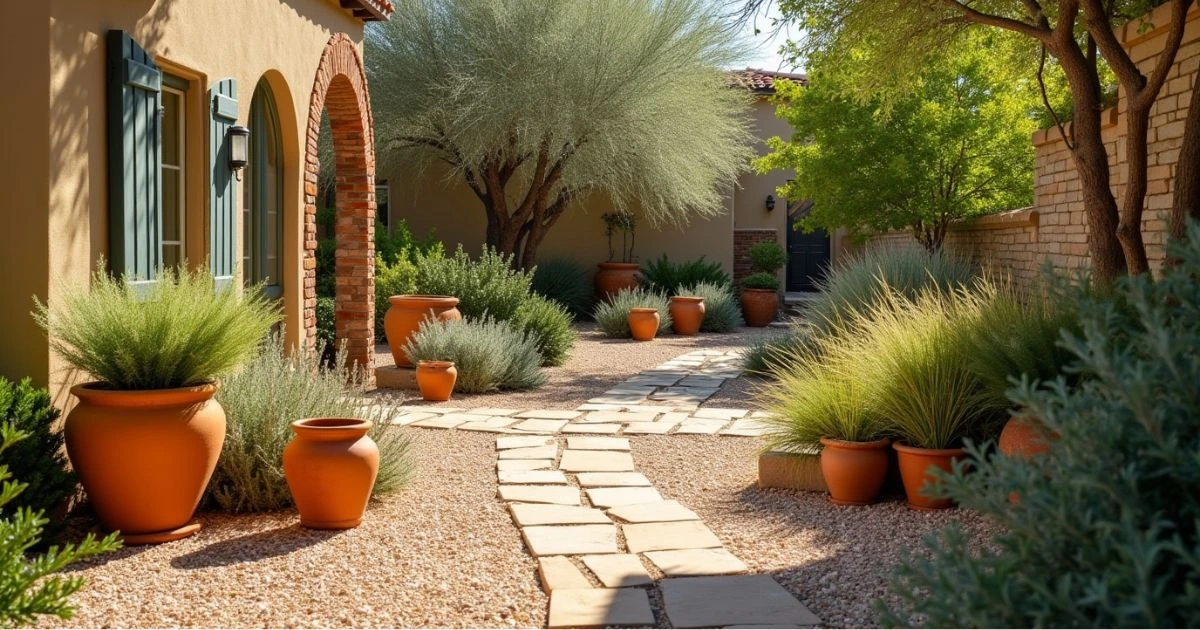
Bring the charm of the Mediterranean to your front yard with a combination of plants like lavender, rosemary, and olive trees. These fragrant, hardy plants thrive in dry conditions, and their silvery foliage creates a calming, serene atmosphere. Terracotta pots, stone walls, and gravel walkways complete the look, providing a timeless, low-maintenance style.
4. Pollinator Paradise
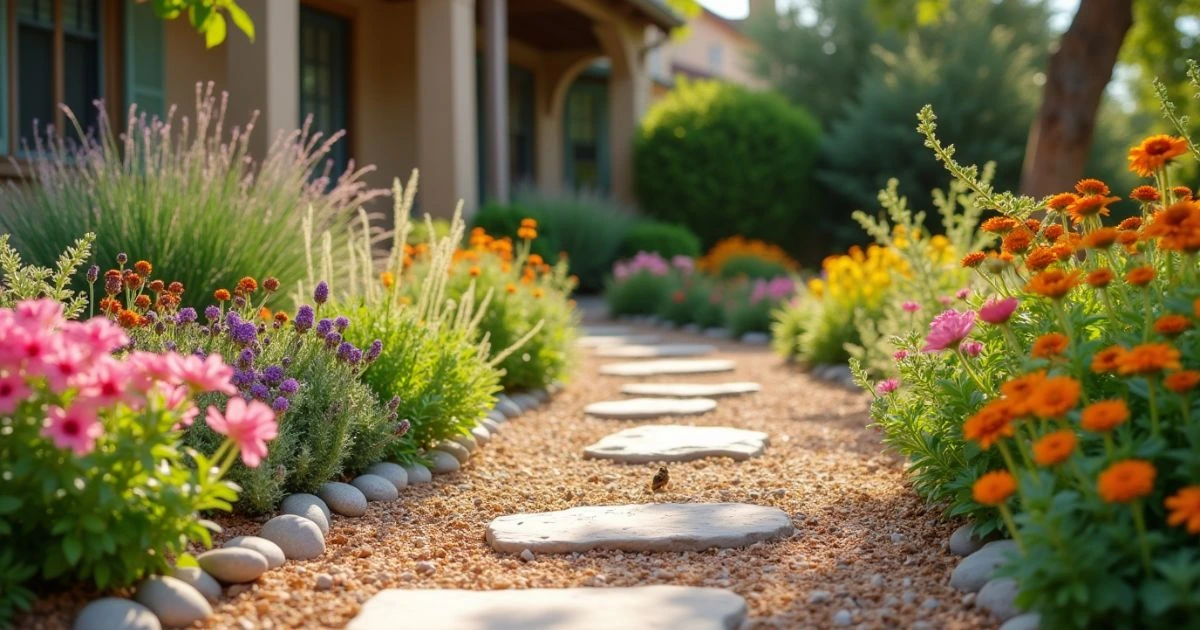
A xeriscape front yard doesn’t just have to be water-wise—it can also be an important habitat for local wildlife. Design your yard to attract bees, butterflies, and hummingbirds by planting pollinator-friendly plants like butterfly bush, milkweed, and coneflowers. Incorporate nectar-rich flowers that bloom in different seasons to keep pollinators coming back year-round.
5. Succulent Showcase
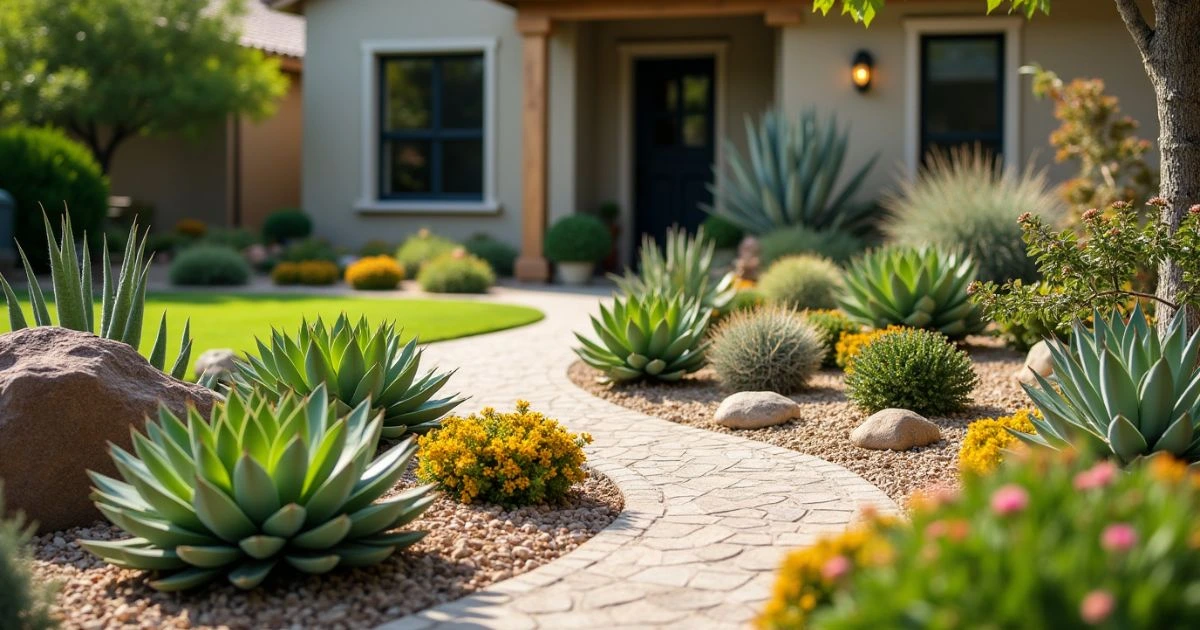
Succulents are low-maintenance plants that thrive in dry conditions. Create a stunning xeriscape by using a variety of succulents, including echeverias, aloe vera, and sedums. These plants come in a range of shapes, sizes, and colors, making them a perfect choice for a modern, stylish front yard. Arrange them in raised beds or containers to add dimension and interest.
6. Modern Zen Garden
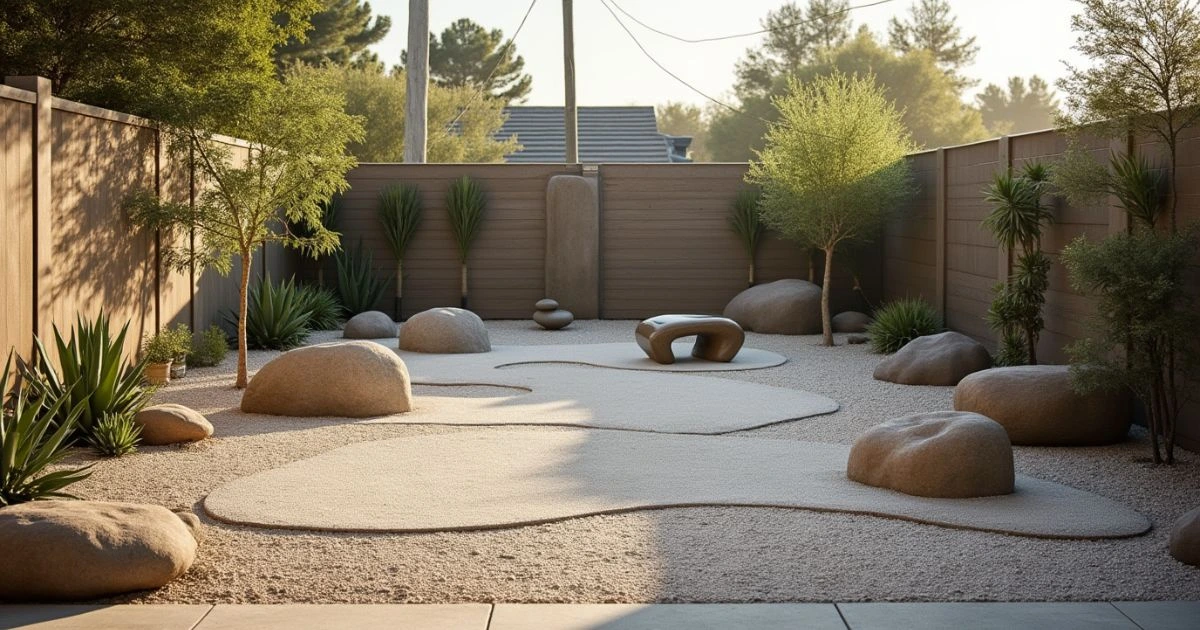
For those who prefer a minimalist approach, a Zen garden is a perfect xeriscape solution. Incorporate clean lines, sand or gravel, and carefully placed rocks to create a calming, meditative space. Add simple, drought-tolerant plants like bamboo, ornamental grasses, or succulents for a touch of greenery, and consider including a waterless fountain to enhance the Zen aesthetic.
7. Ornamental Grass Elegance
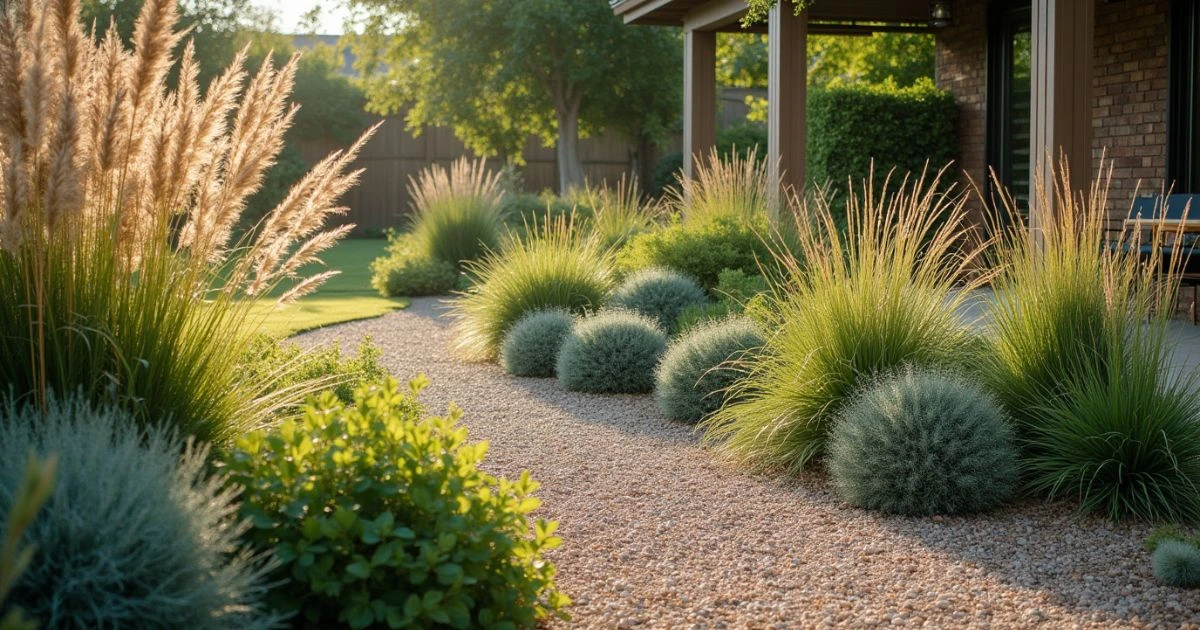
Ornamental grasses are versatile plants that add texture and movement to your xeriscape front yard. Grasses like blue fescue, muhly grass, and fountain grass grow well in dry conditions and can be planted in clusters or along the borders of your yard. Their height and form will add structure to your space while creating a relaxed, natural look.
How to Start Your Xeriscape Transformation
Making the switch to a xeriscape front yard is easier than you might think. Follow these steps to start transforming your space.
1. Assess Your Yard’s Needs
Before starting your xeriscape project, evaluate your yard. Consider the amount of sunlight each area receives, the type of soil, and the natural drainage patterns. These factors will help determine the best plants for your specific location.
2. Choose the Right Plants
Choosing plants that are adapted to your climate is essential for a successful xeriscape. Opt for drought-resistant, native plants like Russian sage, lavender, and yucca, which are perfect for xeriscape Colorado yards. Be sure to include a variety of plant heights, textures, and colors to maintain visual interest in your yard.
3. Plan for Efficient Irrigation
Invest in a drip irrigation system to efficiently water your plants while minimizing waste. Drip systems provide water directly to the roots, minimizing evaporation and runoff. Make sure to water deeply but less frequently to promote deep root development.
4. Add Hardscaping Features
Integrate hardscaping features such as paths, patios, and decorative rocks into your design. These elements not only reduce water usage but also create structure and interest in your front yard. Gravel paths and stone patios are low-maintenance and add texture and dimension to your landscape.
5. Focus on Mulching
Apply mulch around your plants to conserve moisture and prevent weed growth. Organic mulches, such as bark or wood chips, are ideal for xeriscaping because they decompose over time, enriching the soil.
Zero Landscape Ideas: Eco-Friendly Alternatives
While xeriscaping focuses on water-efficient plants, you can also create a beautiful zero landscape by emphasizing hardscaping and other non-plant elements.
Patios and Pathways
Consider replacing your lawn with a patio made from sustainable materials such as stone, concrete, or reclaimed wood. Create paths with gravel or stepping stones to provide interest and define your yard’s layout.
Decorative Rocks and Mulch
Rocks and mulch can be used to cover large areas of your front yard, providing both visual interest and a functional, water-efficient solution. Mix different textures and colors to create a unique, stylish look.
Waterless Features
If you love the sound of water features but want to keep things water-wise, consider adding a waterless fountain or a sculpture as a focal point in your xeriscape front yard.
FAQ: Common Xeriscaping Questions
How much water does xeriscaping save?
Xeriscaping can reduce your water usage by up to 50%, depending on the size of your yard and the plants you choose.
What are the best xeriscape plants for Colorado?
In Colorado, drought-tolerant plants like Russian sage, yarrow, and blue grama grass thrive in xeriscape landscapes.
How do I install a drip irrigation system?
Drip irrigation systems can be easily installed with a kit available at most garden centers. Be sure to lay out your plants and design the system to target their root zones.
Start Your Xeriscape Journey Today
Creating a xeriscape front yard is an excellent way to save water, reduce maintenance, and enhance your home’s curb appeal. With the right planning and plant choices, you can design a beautiful, sustainable yard that thrives year-round. Whether you’re interested in desert-inspired minimalism or a lush pollinator paradise, there’s a xeriscape design that suits your style and needs.
This is the ideal moment to begin transforming your yard into a xeriscape garden. Adopt sustainable landscaping today and enjoy a water-efficient, beautiful yard that will endure for years to come.


